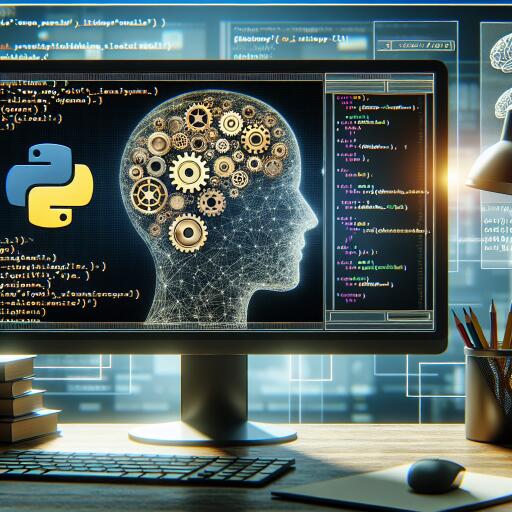How to Implement AI Algorithms in Python: A Guide
As we continue to march forward in this age of technological revolution, the integration of Artificial Intelligence (AI) across various sectors has marked a transformative era. Among the plethora of programming languages available, Python is celebrated for its simplicity and adaptability, making it the preferred choice for implementing AI algorithms. This guide aims to shed light on the steps involved in embedding AI algorithms within Python projects, catering to both novices and seasoned professionals.
Understanding the vast landscape of AI is imperative before diving into its implementation. AI is a broad domain, inclusive of machine learning, deep learning, natural language processing, and computer vision, among others. Each area requires specific tailor-made algorithms to handle distinct tasks. Identifying the nature and requirements of your project is a critical step towards selecting the most suitable algorithm for execution.
The journey of implementing AI algorithms begins with the installation of Python and crucial libraries like NumPy, Pandas, Matplotlib, and Scikit-learn. For enthusiasts diving into deep learning, frameworks such as TensorFlow or PyTorch are indispensable. The creation of virtual environments is recommended to ensure dependency management and project isolation.
The adage “garbage in, garbage out” resonates profoundly within the AI sphere. The caliber of your data significantly influences the outcome of your algorithm. Leveraging Python’s Pandas library can aid in importing and structuring your data effectively. Through exploratory data analysis (EDA), one can glean insights into the data’s structure, address anomalies, and normalize the dataset, setting the stage for successful algorithm training.
Selecting an appropriate algorithm is crucial and should be approached with care. For tasks involving supervised learning, such as classification or regression, algorithms like Support Vector Machines (SVM), Decision Trees, or Random Forests may be fitting. Conversely, for complex pattern recognition in unstructured data, diving into deep learning with neural networks might be the path forward.
Upon selecting an algorithm, the subsequent step is model training. This involves partitioning your dataset into training and testing subsets to accurately gauge the model’s performance. Employing metrics such as accuracy, precision, recall, or the F1 score can offer valuable insights into the model’s effectiveness. Fine-tuning the model through hyperparameter tweaks may be necessary to achieve optimal results.
Fine-tuning your model for enhanced performance involves the meticulous adjustment of hyperparameters. Techniques like grid search or random search can pinpoint the most effective hyperparameter combinations. The GridSearchCV tool, provided by sklearn, simplifies this process, making it more accessible.
Following the successful training of your model, the next milestone is deployment. Web application frameworks such as Flask or Django can facilitate the creation of web-based applications, while cloud services like AWS, Azure, or Google Cloud provide scalable deployment options in production settings.
However, the journey does not conclude with deployment. It evolves into an ongoing process of monitoring and maintenance. Periodically retraining your model with fresh data ensures its adaptation to new patterns. Implementing monitoring systems to detect performance declines is crucial for maintaining the reliability and relevance of your AI algorithm.
Embarking on the journey to implement AI algorithms in Python is an endeavor that marries science with creativity and perseverance. This guide offers a navigational tool for enthusiasts and professionals alike, guiding them through the complexities of AI implementation. Whether you are making your first foray into AI or seeking to refine your skills, Python provides a fertile landscape for exploration and innovation.










